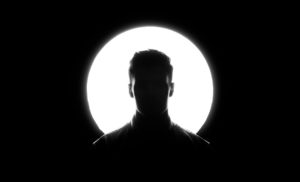
Sarah was a young actor, and this was the first time she was on the stage under my direction. She started her monologue and I quickly realized she didn’t know what to do with her lines or her body, so she aimlessly wandered on stage. Her eyes were glazed over and her arms were waving in every different direction!
“Stop!” I said, “just stand there.”
This is one of the hardest things to do; to hear the words and find the meaning behind them. With actors like Sarah I have them stand still with their arms at their sides, and tell me what is happening. The difference is astounding. I immediately understand their message… and so do they.
Why is this so hard to do? It’s because our thoughts have a speed (which is very, very fast) and our thoughts tell us to say the word, move the hand, squint the eyes, move the legs, etc. On top of that we process what’s around us like distractions, or facial expressions, all at seemingly the same time.
To stand still and focus on a message is challenging, but is impactful.
In 1994, I directed the Rodgers and Hammerstein musical The King and I. At one point, Anna (played by the incomparable Broadway actress Rachel DeBenedet) sings “Shall I Tell You What I Think of You?” This is a four-minute rant over her frustration with the King. For four minutes she stood in a spotlight with nowhere to move, and it was riveting. She had to just stand there and tell her story, and it was mesmerizing.
Here’s the lesson
When you’re uncertain. When your message is at risk of being lost, and your senses are overwhelmed by thoughts and stimuli, just stand. Take a breath, clear your mind, and let the words, the actions, and the understanding come to you. When you do you will be able to clearly communicate your message.

